Grey-headed Parakeet: Overview, Characteristics and Care
Welcome to our comprehensive guide on the Grey-headed Parakeet (Psittacula finschii). As a unique and captivating species, Grey-headed Parakeets are popular among bird enthusiasts and pet owners alike. In this section, we’ll provide an overview of this beautiful bird, including its physical appearance and size, as well as essential care information for those interested in welcoming these feathered friends into their homes.
Key Takeaways:
- Grey-headed Parakeets (Psittacula finschii) are a popular species among bird enthusiasts and pet owners.
- These birds have a distinct physical appearance and size compared to other parakeet species.
- Understanding the key characteristics and care requirements of Grey-headed Parakeets is crucial for their health and well-being as pets.
Let’s take a closer look at the Grey-headed Parakeet’s physical appearance and size.
Physical Appearance
The striking Grey-headed Parakeet is a medium-sized parrot measuring 36 to 40 cm (14 to 16 inches) in length. The typical weight is approximately 120 grams (4.2 ounces).
Its plumage is predominantly greenish-yellow, with a medium to dark grey head that contrasts sharply with the colorful body. The forehead, crown, cheeks and ear coverts are slate blue-grey, while the chin and lower cheeks are deep black, forming a distinctive facial pattern. This black area extends in a narrow collar around the hindneck before meeting the bright bluish-green ring on the nape.
The upperparts and wings are largely yellow-green, with the exception of the shoulder patch formed by the brown inner median wing coverts. The primaries are green with narrow yellow edging, while the secondaries are plain green. The underwing coverts are a deep bluish-green that contrasts against the paler green underparts. The long central tail feathers are striking—deep purple-blue with broad yellowish-white tips. The lateral tail feathers are green with yellow edging.
Other notable features include the bright coral red upper mandible which fades to yellow at the tip, and the pale yellow lower mandible. The cere is whitish, and the eyes are a distinctive pale yellow. The legs are greenish.
Behavior and Temperament of Grey-headed Parakeets
These birds are known to be social and love to interact with other parakeets and humans alike. However, as with any animal, each parakeet has its unique personality, and temperaments can vary.
Grey-headed parakeets are active birds that enjoy playing and exploring their surroundings. They have a curious nature and can be mischievous at times. They have an exceptional memory and can recognize individuals and objects even after a prolonged period.
In the wild, Grey-headed Parakeets typically form large flocks and are very vocal. They make a variety of sounds, including chirping, whistling, and squawking, to communicate with other birds and to warn of potential threats. In captivity, these birds will continue to vocalize and enjoy mimicking sounds and words that they learn from their owners.
When it comes to temperament, Grey-headed Parakeets are generally friendly and affectionate, though they can be wary of strangers at first. With patience and consistent positive reinforcement, they can become quite tame and develop individual personalities that showcase their playful and interactive side.
While Grey-headed Parakeets can thrive in a variety of living situations, they do require daily mental and physical stimulation to keep them happy and healthy. Providing plenty of toys, perches, and interaction with their owners can help tame these birds and promote a positive temperament.
Habitat and Distribution of Grey-headed Parakeets
Grey-headed Parakeets are native to the Indian subcontinent, specifically in the foothills of the Himalayas, from northeastern Pakistan to western and central Nepal, Bhutan, and northeastern India.
The grey headed parakeet inhabits a broad area in Southeast Asia. You can spot it in many parts of Vietnam, the whole country of Laos, most of eastern Cambodia, the northern regions of Thailand, and most of Myanmar, except for the Tanintharyi Region. You can also find it in the Yunnan province of China, Bangladesh (although it’s quite rare in the far eastern parts) and in nearly all of Northeast India and the far southeastern areas of Bhutan.
Within these regions, they are found in a variety of habitats, including subtropical and tropical forests, woodland, shrubland, and cultivated areas. They prefer areas with tall trees, such as riparian forests, where they can find suitable nesting sites and roosting locations.
Their natural distribution ranges from 500 to 2700 meters above sea level, but they can also be found in lower elevations and higher altitudes. During the breeding season, they tend to migrate to higher altitudes, where food is more abundant, and the climate is cooler.
Human intervention has affected the natural habitat of Grey-headed Parakeets, leading to habitat loss and fragmentation. As a result, their populations have declined in certain areas. Conservation efforts are underway to protect their habitats and improve their conservation status.
Diet and Feeding Habits of Grey-headed Parakeets
These birds are primarily herbivores, and a well-rounded diet should consist of a variety of fresh fruits, vegetables, and high-quality pellets. It’s also essential to provide them with clean, fresh water daily to ensure hydration and prevent disease.
Grey-headed Parakeets are known to enjoy a wide variety of fruits, including apples, oranges, bananas, grapes, and berries, along with leafy greens such as spinach, lettuce, kale, and broccoli. Providing a variety of fruits and vegetables will ensure that they receive a well-balanced diet and all the necessary nutrients they need to thrive.
It’s important to avoid giving Grey-headed Parakeets foods that are high in fat, salt, or sugar, as these can cause health problems and contribute to obesity. Additionally, certain foods are toxic to these birds, including avocado, chocolate, and caffeine, and should be avoided at all costs.
Feeding Habits
Grey-headed Parakeets are active feeders and require regular meals throughout the day. Offering food in the morning and again in the late afternoon is a good feeding schedule to follow. However, it’s important not to overfeed them, as this can lead to obesity and health problems.
Providing a variety of feeding options, such as hanging fresh fruits and vegetables, can also help keep them stimulated and engaged during feeding times. Additionally, offering foraging toys and puzzles can also help stimulate their natural instincts, promoting mental and physical exercise.
We recommend consulting with an avian veterinarian or a qualified bird nutritionist to develop a well-rounded and customized diet plan that meets the specific nutritional requirements of your Grey-headed Parakeet. A healthy diet is essential for these birds to thrive and live a long and happy life.
Breeding Behavior and Reproduction of Grey-headed Parakeets
Grey-headed Parakeets have fascinating breeding behavior and reproduction processes. They are monogamous birds, which means they mate for life. During the breeding season, they become territorial, and the males exhibit aggressive behavior towards other males.
Grey-headed Parakeets prefer to nest in tree hollows, and they use their beaks to excavate a suitable nesting site. They usually lay around 2-5 eggs, which they incubate for around 23-24 days. During this time, the female spends most of her time in the nest, while the male brings her food.
Once the chicks hatch, both parents take turns feeding them regurgitated food. The chicks fledge at around 7-8 weeks, but they still rely on their parents for food for a few more weeks. Grey-headed Parakeets usually breed once a year, and they become sexually mature at around 2-3 years of age.
It’s important to note that breeding these birds isn’t recommended for inexperienced owners, as it requires a lot of preparation and knowledge. Inexperienced breeders may encounter challenges like egg binding, which is a life-threatening condition where the female bird is unable to lay eggs.
Grey-headed Parakeet Vocalizations
Grey-headed Parakeets are not only visually striking but also possess a unique range of vocalizations. These birds are highly communicative and use different sounds to convey various messages and emotions.
Their vocalizations can vary from soft chirps to loud screeches and squawks, and they use them to call for their flock mates, locate food, express excitement, and even express displeasure or aggression. Grey-headed Parakeets also have the ability to mimic certain sounds and words, making them excellent at imitating human speech.
One of the most unique vocalizations of the Grey-headed Parakeet is its high-pitched whistle. This whistle is typically heard in the early morning or evening as birds communicate their presence and establish their territory. Grey-headed Parakeets also have a repertoire of repetitive sounds, such as clicking or clucking, which they use during social interactions.
By understanding the meanings of these vocalizations, owners can better gauge the mood and needs of their Grey-headed Parakeets. For example, a loud screech may indicate danger or distress, while a soft, gentle chirp may indicate contentment and relaxation.
Pet Care for Grey-headed Parakeets
Keeping Grey-headed Parakeets as pets requires a deep understanding of their specific care needs. In this section, we will discuss the essentials of providing proper care, including taming and training techniques, creating a safe and stimulating environment, and promoting their overall well-being.
Taming Grey-headed Parakeets
Taming your Grey-headed Parakeet is a crucial aspect of ensuring a healthy relationship between you and your bird. The key to taming is patience and consistency. Start by spending time near your bird’s cage, speaking to them in a calm and soothing tone. Once your bird has become accustomed to your presence, offer treats through the bars of their cage, gradually moving closer to the bird as they become more comfortable with you.
Training Grey-headed Parakeets
Training your Grey-headed Parakeet is an essential aspect of their care, allowing you to establish boundaries and teach them important behaviors. As with taming, consistency is key. Start with basic commands, such as “step up” and “step down,” rewarding your bird with treats for good behavior.
Creating a Safe and Stimulating Environment
Creating a safe and stimulating environment for your Grey-headed Parakeet is essential for their health and well-being. The size and layout of their cage are crucial considerations, with adequate space for them to move around and exercise. Providing perches, toys, and other enrichment activities can help keep your bird mentally stimulated, reducing stress and boredom.
It’s also important to create a consistent daily routine for your bird, allowing them to establish a sense of predictability and security. This includes providing them with a balanced diet, fresh water, and regular cleaning of their cage and surrounding area.
Promoting Overall Well-being
Promoting the overall well-being of your Grey-headed Parakeet requires attention to their physical and mental health. Regular veterinary checkups can help identify potential health issues, while proper nutrition and exercise can help promote physical health.
As social creatures, Grey-headed Parakeets thrive on interaction and attention from their owners. Spending time with your bird, engaging in play and training activities, and providing plenty of positive reinforcement can help promote their mental well-being and build a strong bond between you and your feathered friend.
Health Issues and Maintenance for Grey-headed Parakeets
As responsible pet owners, it’s essential to understand and address any potential health issues that may arise in our Grey-headed Parakeets. In this section, we will discuss common health concerns specific to this species and provide guidance on regular maintenance routines.
Common Health Issues
One of the primary health concerns for Grey-headed Parakeets is respiratory infections, often caused by exposure to toxins, such as tobacco smoke or fumes from non-stick cookware. Symptoms to look out for include sneezing, coughing, and difficulty breathing. If you suspect your bird may have a respiratory infection, seek veterinary care immediately.
Another common issue is feather plucking, which may occur due to psychological or environmental factors, such as boredom, stress, or lack of stimulation. This behavior can lead to skin infections and other health problems, so it’s crucial to address the underlying cause promptly. Providing your bird with plenty of toys, socialization, and a stimulating environment can help prevent feather plucking.
Parasites, such as mites and lice, can also affect Grey-headed Parakeets, leading to skin irritation, feather loss, and other issues. Regularly inspecting and cleaning your bird’s cage, perches, and toys can help prevent infestations. If you notice any signs of parasites, consult with a veterinarian about treatment options.
Maintenance Routines
Proper maintenance routines can help keep your Grey-headed Parakeet healthy and happy. Regularly cleaning their cage, perches, and toys is crucial for preventing the buildup of bacteria and other pathogens. Providing fresh, clean water daily is also essential, as well as a healthy, balanced diet consisting of high-quality pellets, fresh vegetables, and fruit.
Additionally, scheduling regular veterinary checkups can help detect and prevent potential health issues before they become serious. Vaccinations for diseases, such as psittacosis, are also recommended for Grey-headed Parakeets.
By staying attentive to your Grey-headed Parakeet’s health and addressing any issues promptly, you can ensure a long, happy life for your feathered friend.
Daily Rhythms and Lifespan of Grey-headed Parakeets
Grey-headed Parakeets have distinct daily rhythms that are important to understand for their proper care and well-being. These birds are diurnal, meaning they are active during the day and sleep at night. It is essential to provide them with a quiet and dark environment at night to promote restful sleep.
In their natural habitat, Grey-headed Parakeets live in flocks and engage in social activities such as foraging, bathing, and preening. In captivity, it is essential to provide them with opportunities for socialization and stimulation through toys, perches, and other enriching activities.
The lifespan of Grey-headed Parakeets is typically around 15-20 years in captivity. However, providing them with optimal care, a healthy diet, and regular veterinary check-ups can extend their lifespan. It is important to note that the lifespan of these birds can be significantly impacted by their living conditions, diet, and overall care.
Owners should also monitor their parakeets’ weight, behavior, and any signs of illness, such as changes in appetite or feather plucking. Additionally, annual check-ups with a qualified avian veterinarian can help to detect and treat any potential health issues early on.
By understanding the daily rhythms and lifespan of Grey-headed Parakeets, owners can provide them with the care they need to lead a healthy and fulfilling life.
Subspecies and Conservation Status of Grey-headed Parakeets
Grey-headed Parakeets have four recognized subspecies, each with their own distinct characteristics and geographical range. The subspecies are as follows:
| Subspecies | Geographical Range |
|---|---|
| Psittacula finschii finschii | India, Nepal, Bhutan, Bangladesh |
| Psittacula finschii intermedia | Myanmar, Thailand |
| Psittacula finschii borealis | China, northern Myanmar |
| Psittacula finschii hainanensis | Hainan Island, China |
Unfortunately, like many parrot species, Grey-headed Parakeets face multiple threats that have resulted in declining populations. Habitat loss due to deforestation, hunting for the pet trade, and competition with invasive species are some of the main reasons for their population decline. As a result, Grey-headed Parakeets are listed as “Near Threatened” on the International Union for Conservation of Nature’s (IUCN) Red List of Threatened Species.
Efforts are being made to protect and conserve Grey-headed Parakeet populations, including habitat restoration, captive breeding programs, and education and awareness campaigns. Supporting such initiatives, as well as responsible pet ownership, can help ensure the survival of this fascinating species for generations to come.
Challenges and Rewards of Grey-headed Parakeet Ownership
As with any pet ownership, owning a Grey-headed Parakeet comes with both rewards and challenges. Understanding and addressing these challenges can help ensure a fulfilling and enriching experience for both you and your feathered friend.
Challenges
One of the biggest challenges of owning a Grey-headed Parakeet is their need for a stimulating and enriching environment. Without proper mental and physical stimulation, they can become bored and exhibit destructive behaviors such as feather plucking, screaming, and biting.
Taming and training a Grey-headed Parakeet can also be a challenge. They are naturally skittish and may take time to build trust with their owners. Consistency and patience are key when it comes to training, and positive reinforcement techniques are highly recommended.
Another challenge is their dietary requirements. Grey-headed Parakeets require a varied diet that includes fresh fruits, vegetables, and high-quality pellets. Ensuring they receive the right balance of nutrients can be tricky, but it is essential for their health and well-being.
Rewards
Owning a Grey-headed Parakeet can be incredibly rewarding. These birds are highly intelligent and social, forming strong bonds with their owners. They are also known for their playful and curious personalities, which can make for hours of entertaining interactions.
Watching your Grey-headed Parakeet learn and grow can be a rewarding experience. They can learn tricks, mimic words and sounds, and even solve puzzles.
Lastly, by owning a Grey-headed Parakeet, you are contributing to their conservation efforts. These birds are listed as near-threatened due to habitat loss and trapping for the pet trade. By providing a safe and loving home for a Grey-headed Parakeet, you are helping to protect and preserve the species.
Conclusion
Grey-headed Parakeets are fascinating birds that require specific care and attention. With their distinct physical appearance, vocalizations, and behaviors, they make fantastic pets for those who are willing to provide for their needs.
By understanding their natural habitats, dietary requirements, and breeding behaviors, we can create a safe and stimulating environment that promotes their health and well-being. Taming and training techniques can also be used to create a stronger bond between pet and owner and to aid in their daily care.
However, owning a Grey-headed Parakeet also comes with its share of challenges. Keeping them healthy and happy requires a significant investment of time, money, and effort, which not everyone may be willing or able to provide. Additionally, certain health concerns may arise, which require prompt attention and veterinary care.
Despite these challenges, the rewards of Grey-headed Parakeet ownership are many. Their vibrant personalities, unique vocalizations, and playful behaviors make for a fulfilling and enriching experience. Additionally, by supporting conservation efforts and learning about their subspecies, we can contribute to the preservation of these amazing birds for generations to come.
Overall, we hope this guide has provided valuable information for those interested in the Grey-headed Parakeet (Psittacula finschii). By following best practices for their care and addressing their specific needs, we can forge a lasting bond with these captivating creatures while promoting their health and conservation.
FAQ
What is the physical appearance and size of the Grey-headed Parakeet?
The Grey-headed Parakeet (Psittacula finschii) is a medium-sized parakeet with a predominantly green body. They have a grey head, as their name suggests, along with distinctive red patches on their wings. The average size of an adult Grey-headed Parakeet is around 15 inches (40 centimeters) in length.
What are the key characteristics of Grey-headed Parakeets?
Grey-headed Parakeets are known for their playful and social nature. They have a curious and intelligent disposition, often displaying their agility through acrobatic movements. These parakeets are also vocal and capable of mimicking sounds and speech.
How should I care for a Grey-headed Parakeet as a pet?
To ensure the well-being of a Grey-headed Parakeet, it’s important to provide them with a large and spacious cage, balanced nutrition through a diet consisting of seeds, pellets, fresh fruits, and vegetables, daily exercise and mental stimulation, and regular veterinary check-ups. Additionally, they thrive on social interaction with their human caregivers and benefit from regular out-of-cage time.
What are the typical behaviors and temperament of Grey-headed Parakeets?
Grey-headed Parakeets are known for their playful and affectionate nature. They enjoy interacting with their human caregivers and can become quite attached to them. These parakeets are social birds that thrive on the company of others, so it’s important to provide them with ample socialization opportunities.
Where can Grey-headed Parakeets be found in the wild?
Gray-headed Parakeets can be found across a range of countries and regions, including eastern India, Bhutan, southwestern China, Thailand, Cambodia, Laos, Vietnam, Myanmar, and Bangladesh. They prefer habitats such as forests, woodlands, and agricultural areas.
What do Grey-headed Parakeets eat and what are their feeding habits?
Grey-headed Parakeets have a varied diet consisting of fruits, vegetables, seeds, and pellets. It is important to provide them with a balanced and nutritious diet that meets their dietary requirements. These parakeets are naturally curious eaters and benefit from interactive feeding methods that stimulate their foraging instincts.
How do Grey-headed Parakeets reproduce and breed?
Grey-headed Parakeets form monogamous pairs during the breeding season. They typically nest high in tree cavities, with the female laying a clutch of 2-5 eggs. Both the male and female take turns incubating the eggs and raising the hatchlings.
What are some common health issues Grey-headed Parakeets may encounter?
Grey-headed Parakeets can be susceptible to health issues such as respiratory infections, nutrient deficiencies, and beak and feather diseases. Regular veterinary check-ups, a balanced diet, proper hygiene, and a clean living environment are crucial in maintaining their health.
How long do Grey-headed Parakeets typically live?
Grey-headed Parakeets have an average lifespan of 15 to 20 years, but with proper care, they have been known to live up to 25 years or more.
Are Grey-headed Parakeets endangered?
Grey-headed Parakeets are currently listed as a species of Near Threatened on the IUCN Red List. It is a precautionary category used to draw attention to species that may require conservation efforts to prevent them from becoming endangered or critically endangered in the future. Habitat loss and illegal trapping for the pet trade pose threats to their populations, and conservation efforts are essential to ensure their long-term survival.
What are some challenges of owning a Grey-headed Parakeet as a pet?
Owning a Grey-headed Parakeet requires commitment, time, and attention. These parakeets thrive on social interaction and mental stimulation, so neglecting their social needs can lead to behavior issues. Additionally, their long lifespan means that they are a long-term commitment, and their care requirements should be considered for the entirety of their lives.


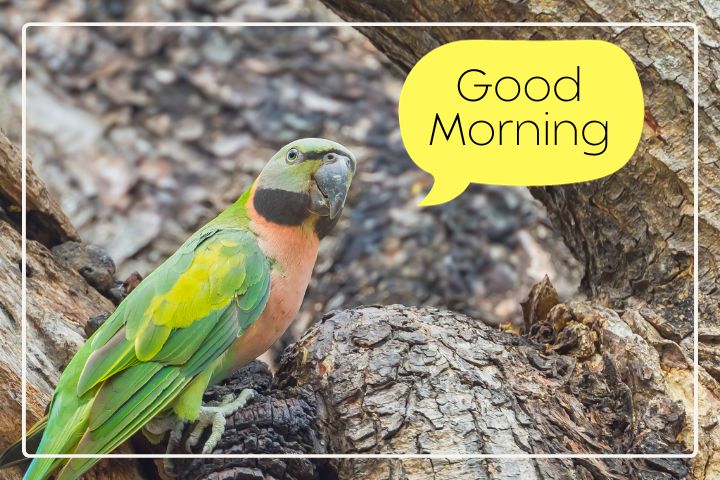

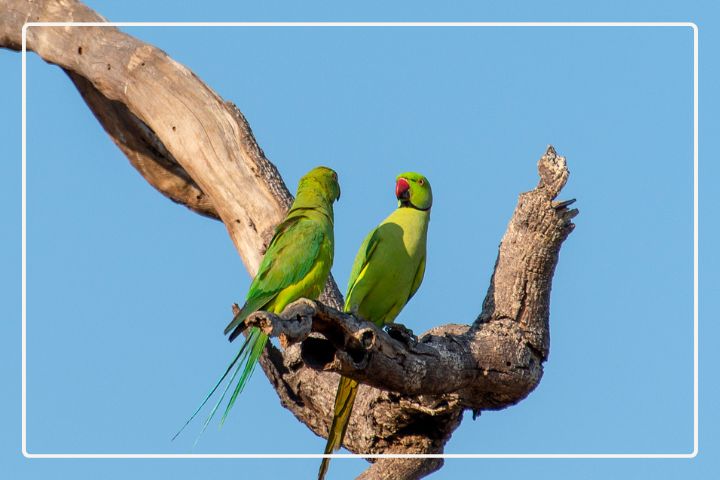
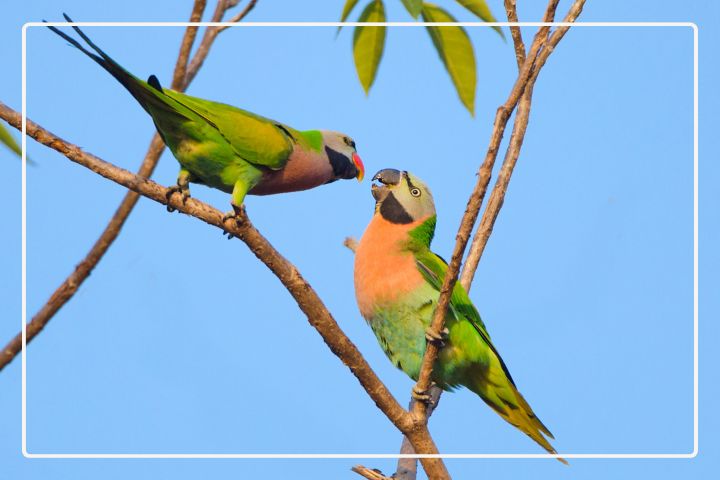
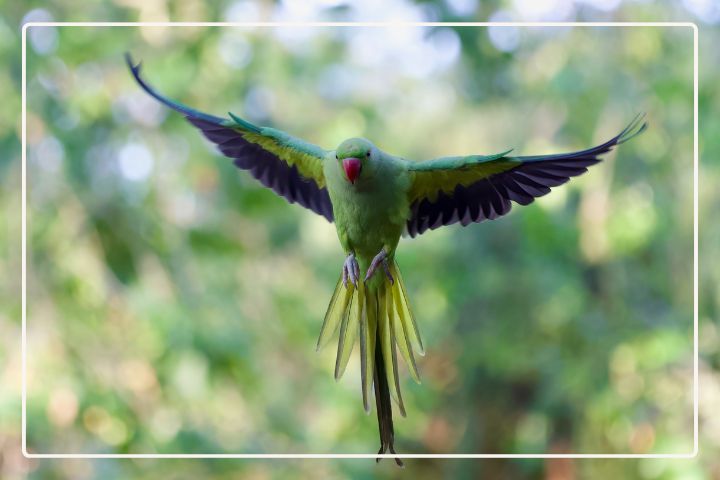
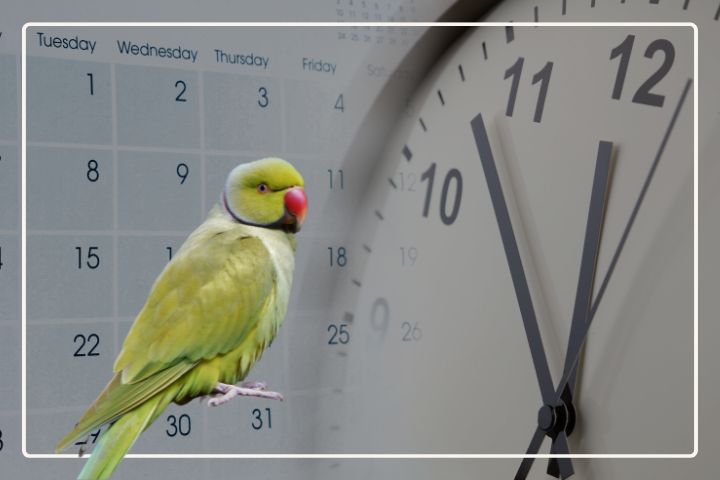
You really make it appear so easy with your presentation however I find this topic to be actually one thing that I feel I’d never understand. It sort of feels too complicated and very broad for me. I am looking ahead in your next publish, I will attempt to get the dangle of it!